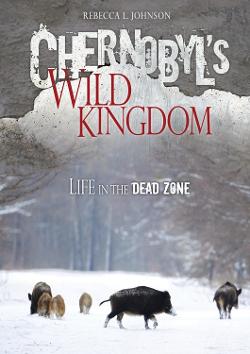 |
Nancy Keane's | Booktalks -- Quick and Simple | |
|
|||||||
 |
Johnson, Rebecca L.
|
|
|
Booktalk #1 Warning: Radioactive Exclusion Area. In April 1986, the Chernobyl Nuclear Power Plant in the Ukraine region of Europe exploded and its reactors were severely damaged. As a result, the exposure to radioactive fallout forced everyone to abandon their homes. However, for the remaining inhabitants, especially the deer, fox, birds and other animals and plants, life would change dramatically. Thirty years later, scientists are beginning to uncover the effects of radiation exposure and understand how the environment has been altered. (Pennsylvania Young Reader's Choice Award Program, 2017) Booktalk #2 How can something so horrible lead to something so beautiful? Chernobylís Wild Kingdom investigates the area expected to be lifeless and devastated, and shows us the beauty that has grown in the last twenty-eight years. Johnson has consulted scientists about the event and the aftermath. Throughout the text, sidebars add information about protection for the ecologists, effects on humans, as well as other topics. Even readers who think they do not like science or nonfiction will be fascinated by this book. (Prepared by: Kim Hayes, Lamar High School, kimberly.hayes@darlington.k12.sc.us South Carolina Young Adult Book nominee 2017) Booktalk #3 It was just an ordinary Friday night in the small town Pripyat, Ukraine. On April 26, 1986, a routine test on the nuclear power plant went horribly wrong. In less than a minute, the plant exploded releasing radiation. The explosion released four hundred times more radioactivity than the atomic bomb dropped on Hiroshima during World War II. But the locals did not know what happened. Radioactivity is invisible and may take awhile to kill. The officials realized that they could not keep this a secret so by Sunday, the town was evacuated. The power plant was encased in concrete but an 18 mile radius around the plant was deemed uninhabitable and blocked off. This area was considered the Dead Zone. No life could live in it for years if ever. But thirty years after the disaster, scientists found something extraordinary. Life found a way. They found plants and animals flourishing in the dead zone. How could that be? And what types of life is found there? |
| SUBJECTS: Chernobyl Nuclear Accident,
Chornobyl' , Ukraine, 1986 -- Environmental aspects. Radioecology -- Ukraine -- Chornobyl' Region. |